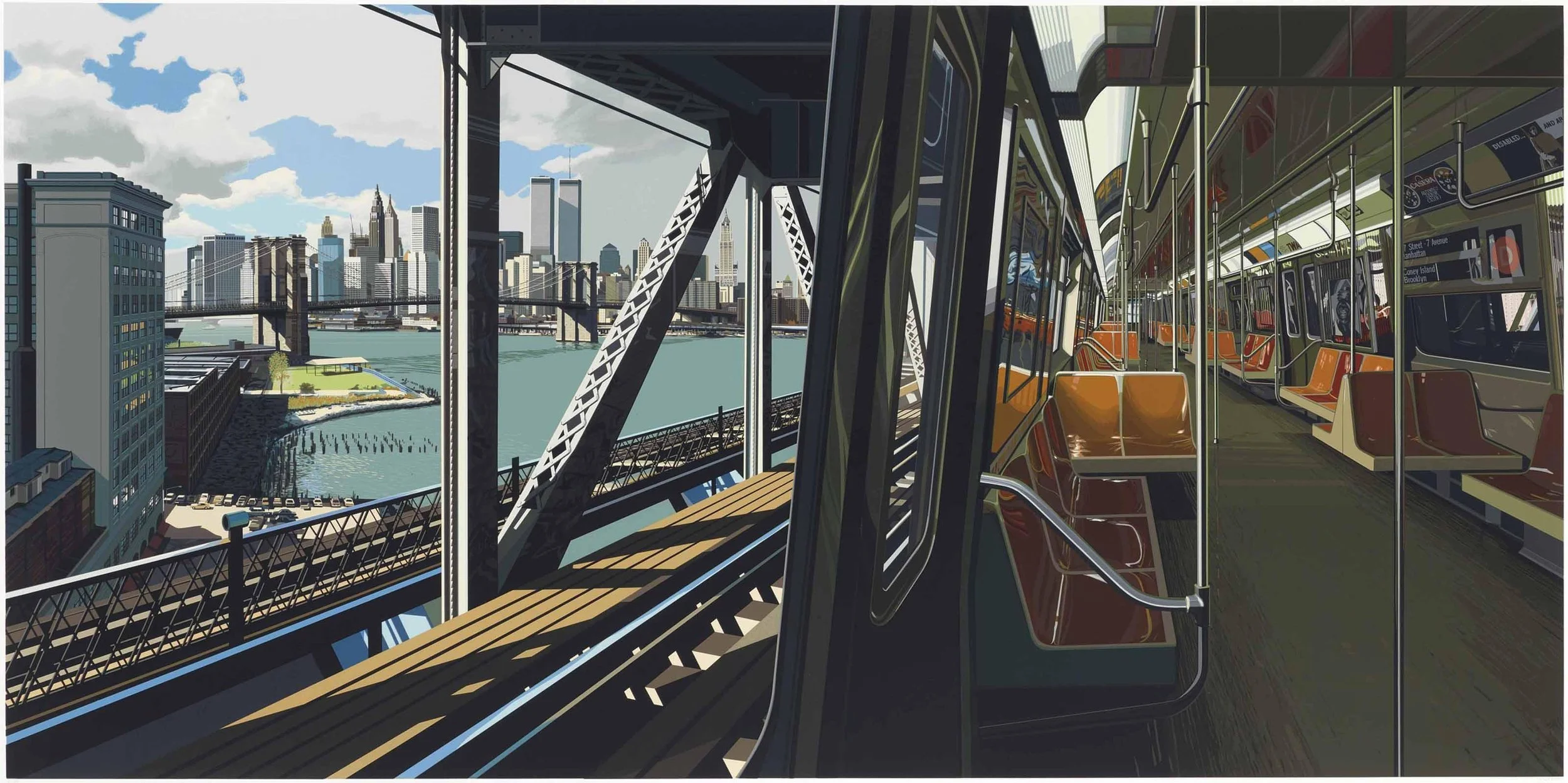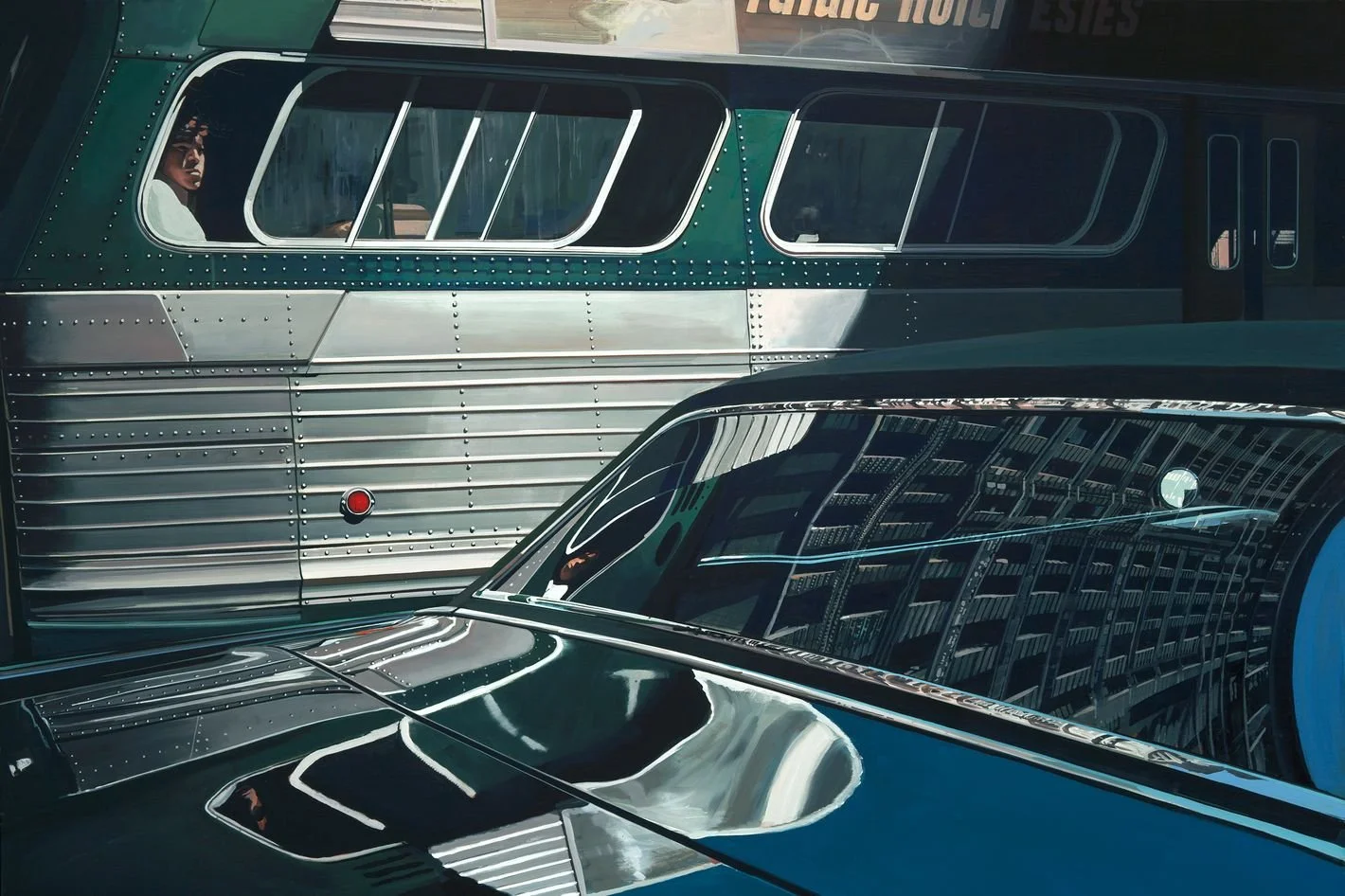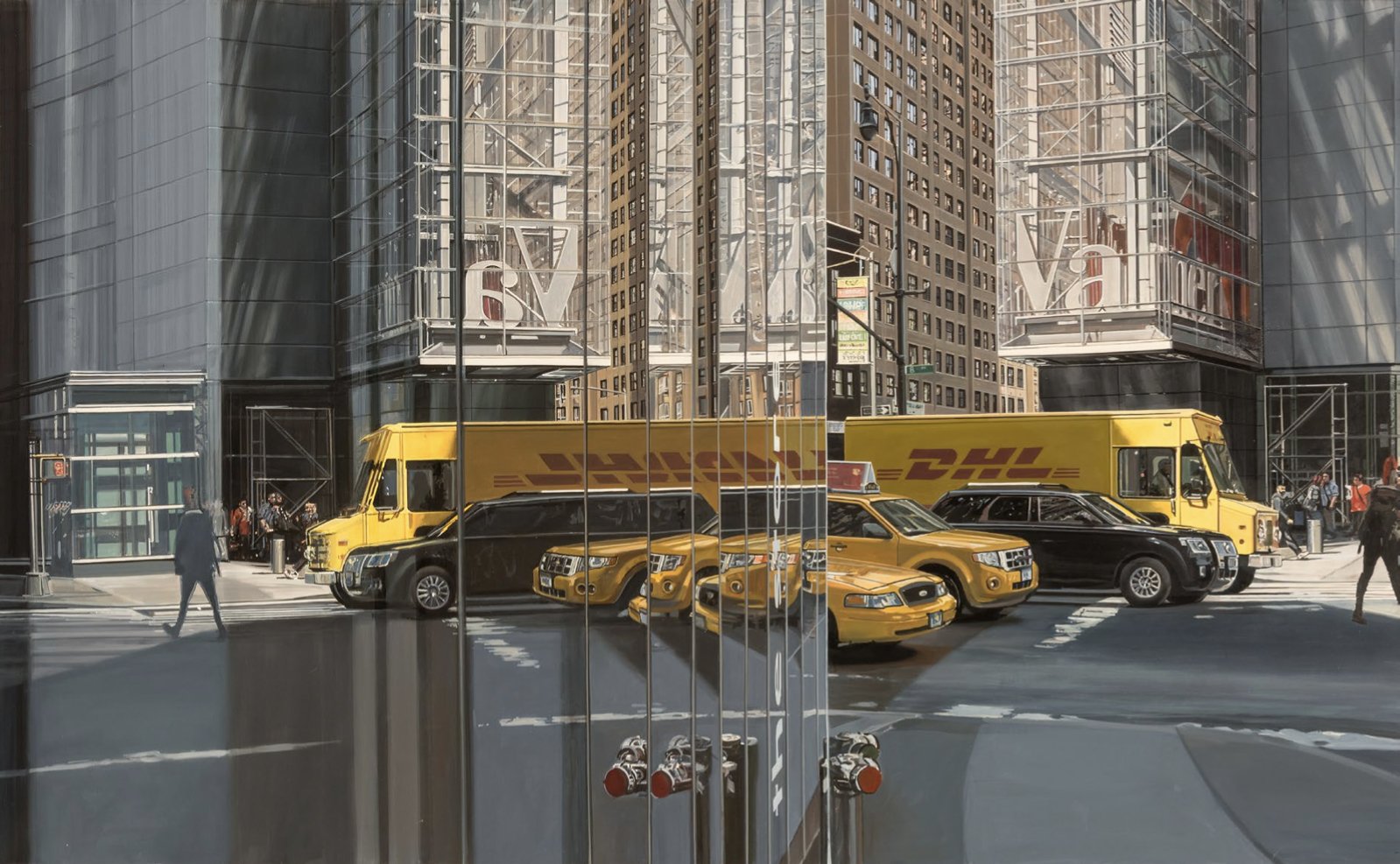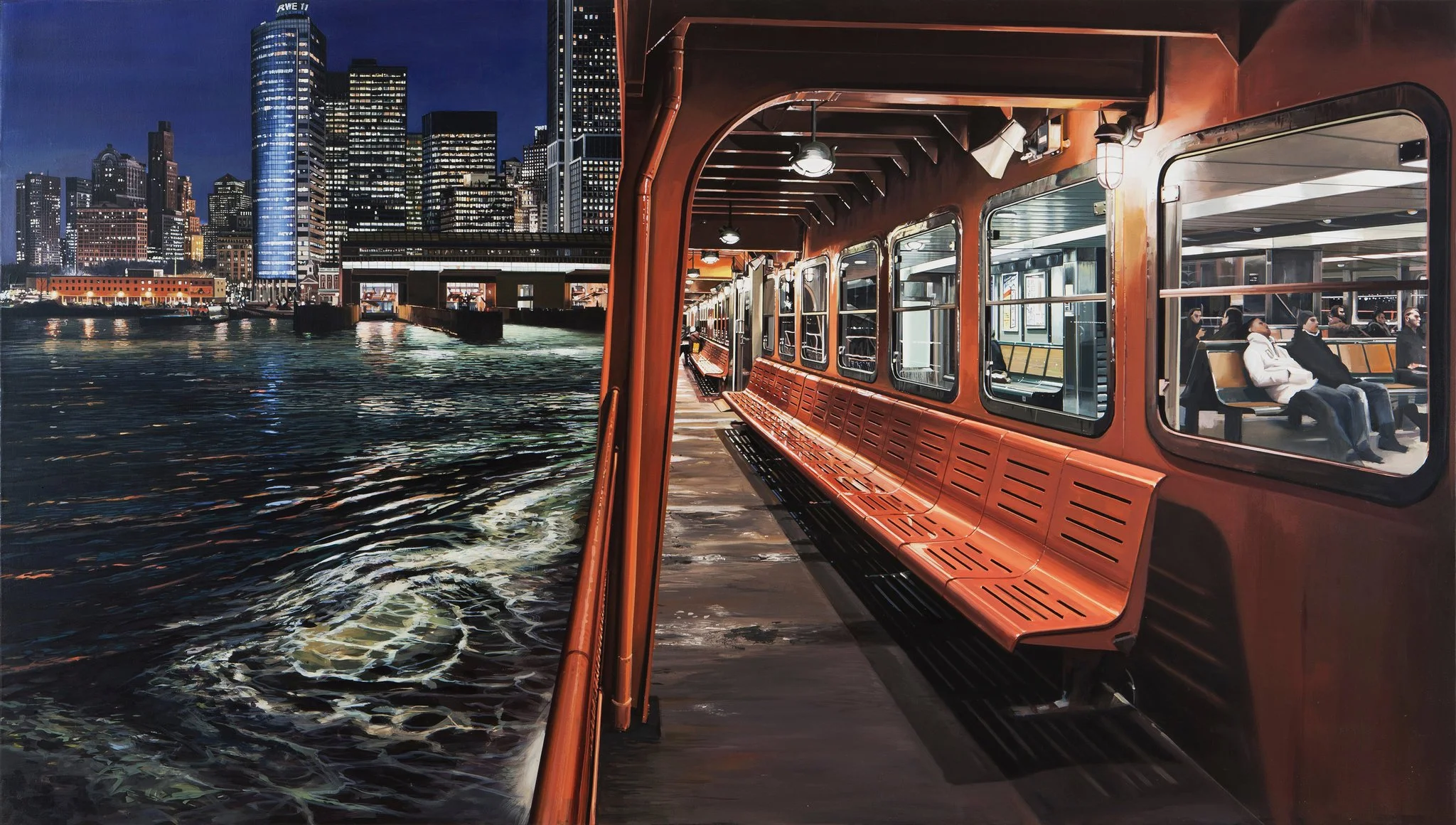“Usually it’s a pretty calculated, sustained, and slow process by which you develop something. The effect can be one of spontaneity, but that’s part of the artistry. ”
d_train_1991.jpg
express_2020.jpg
Richard Estes, an American artist associated with the Photorealist movement, was born on May 14, 1932, in Kewanee, Illinois. Known for his meticulous and detailed paintings that replicate the appearance of photographs, Estes has played a significant role in redefining the boundaries between painting and photography.
Estes grew up in Chicago and developed an early interest in art. He attended the School of the Art Institute of Chicago, graduating in 1956. Initially working as a graphic artist, Estes moved to New York City in 1958, where he became part of the vibrant art scene of the 1960s.
The 1960s marked a period of experimentation and innovation in the art world, with movements like Pop Art and Photorealism challenging traditional artistic conventions. Richard Estes emerged as a prominent figure in the Photorealist movement, which sought to create paintings that closely resembled high-resolution photographs.
One of Estes' defining techniques was the use of reflective surfaces, such as glass windows and shiny cars, to capture the complexity of urban scenes. His early works, like "Diner" (1971) and "Automat" (1967), showcased his ability to render intricate reflections and luminous details with astounding precision.
Estes was a pioneer in the use of photographs as source material for his paintings. He would take multiple photographs of a scene, carefully composing each shot to capture the desired angles and reflections. The photographs served as references for his paintings, which he executed with remarkable accuracy, transforming ordinary cityscapes into mesmerizing, hyper-realistic compositions.
The artist's process involved the layering of thin glazes of acrylic paint to achieve a smooth and seamless surface. The result was a heightened sense of clarity and an almost cinematic quality in his works. Estes' paintings often featured urban environments, storefronts, city streets, and iconic landmarks, presenting a fresh perspective on the contemporary American landscape.
One of his most iconic works is "Telephone Booths" (1968), a painting that captures the reflective surfaces of glass telephone booths in a New York City street. The meticulous rendering of the reflections and the interplay of light and shadow showcase Estes' technical prowess and his ability to transform mundane scenes into compelling works of art.
Throughout his career, Richard Estes continued to refine and expand his Photorealist approach. He explored various subjects, including landscapes, interiors, and cityscapes, each time demonstrating a commitment to capturing the intricacies of light and the reflective surfaces that define his style.
Estes' contributions to the art world were widely recognized. He received prestigious awards, including the National Council on the Arts Award for Lifetime Achievement in the Arts in 2005. His works were exhibited in major galleries and museums globally, solidifying his reputation as a leading figure in contemporary American art.
In addition to his success as a painter, Richard Estes has also worked in other artistic mediums, including printmaking and filmmaking. His influence on the Photorealist movement, along with his dedication to pushing the boundaries of traditional painting, has left an enduring impact on the trajectory of American art.
As of my last knowledge update in January 2022, Richard Estes was still active in his artistic practice. For the latest information on his career and recent works, it is advisable to check more recent sources or the artist's official channels.
staten_island_ferry_arriving_in_manhattan_2012.jpg
My Rating: 7/10
My Rating: 8/10
p.s.
A typeface is distinct from a font. The typeface is the overall design, while a font refers to a specific style, size, and weight within that design. For example, Arial is a typeface, and Arial Bold 12pt is a font within that typeface. In other words, a typeface is what you see and a font is what you use.






